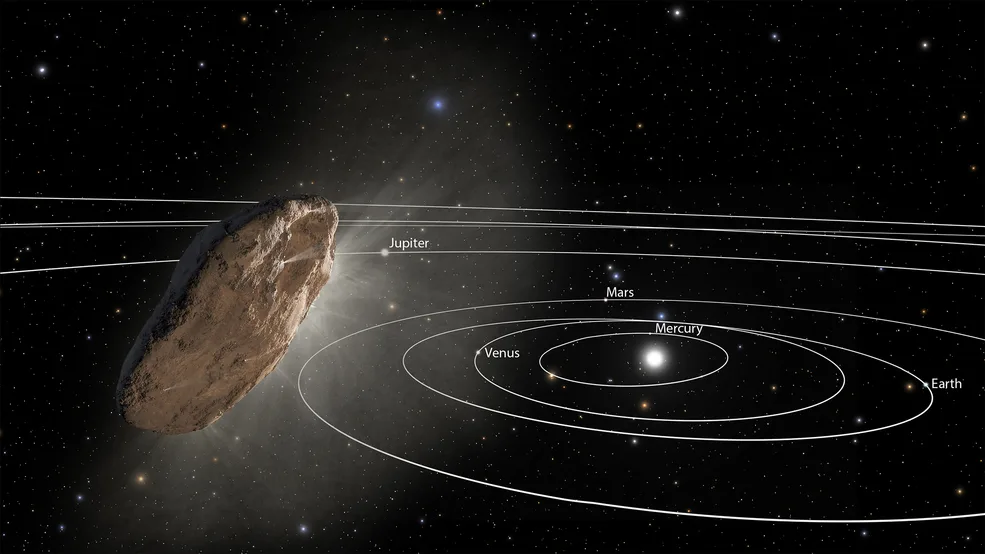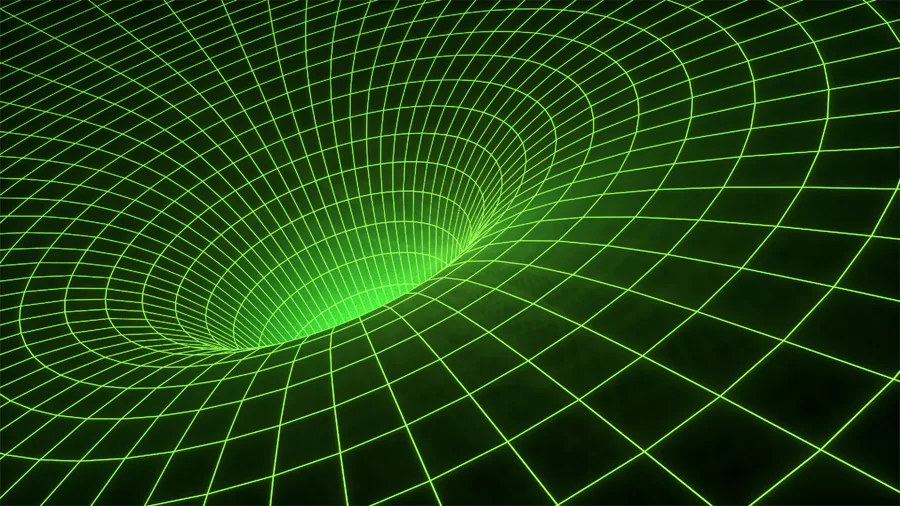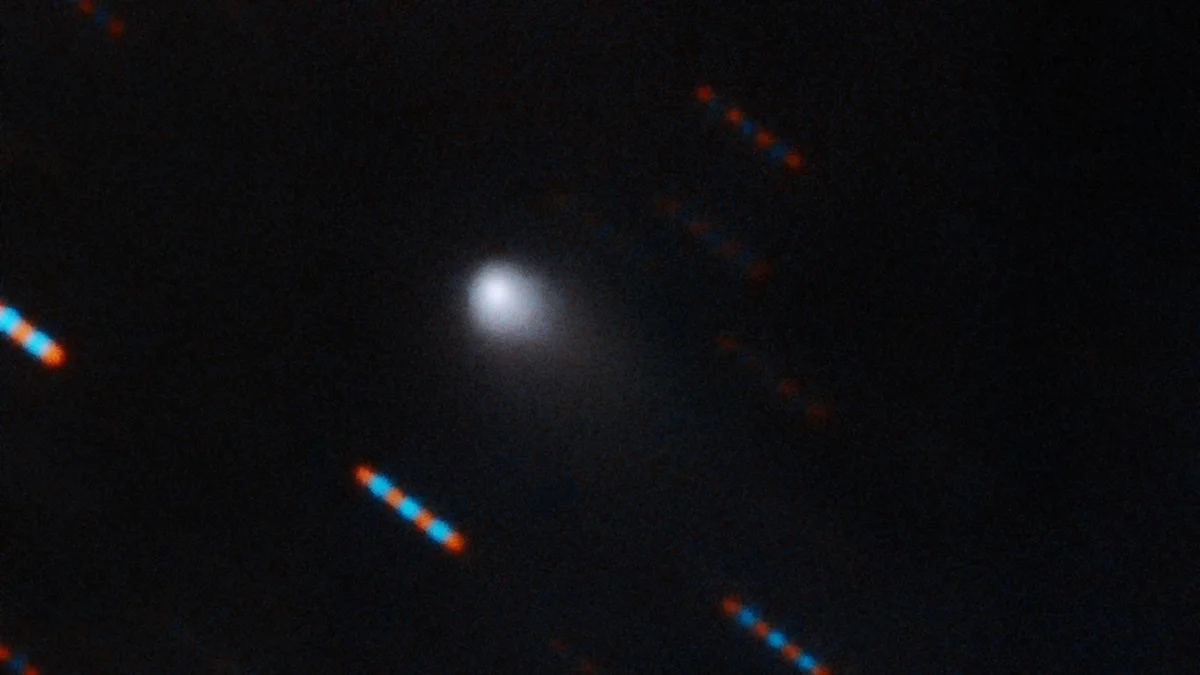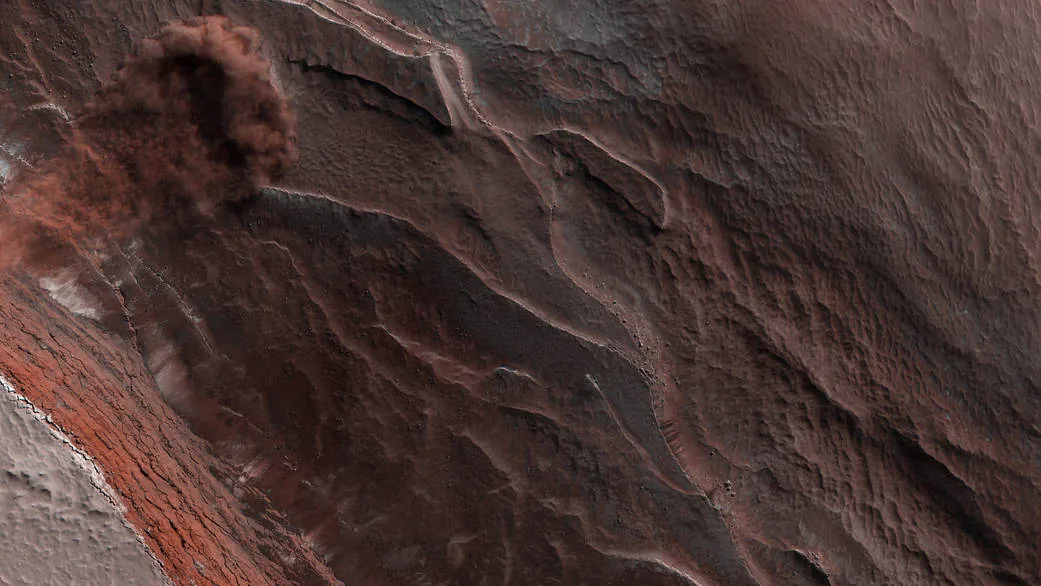
Astronomers spot the first-ever interstellar comet!
What's Up In Space? A Mars avalanche, the first detection of water vapour on a habitable-zone exoplanet, and the first discovery of an interstellar comet!
The 'interstellar object' known as 'Oumuamua made headlines in 2017 after astronomers confirmed it as the very first object ever spotted passing through from someplace beyond our solar system.
Now, they appear to have discovered another!
Inbound towards the Sun is an object now called C/2019 Q4 (Borisov). First identified only as 'gb00234', when it was discovered at the end of August, it is visible in the embedded image from Twitter, above, as the tiny dot in the centre of the telescope view (follow the two straight lines to the point where they would intersect).
Currently, the trajectory of C/2019 Q4 (Borisov) shows that it likely has what is known as a 'hyperbolic orbit'.
By 'hyperbolic orbit' we mean that the object's path through our solar system is at such an angle, and its speed is fast enough, that it will pass through without stopping. The gravitational pull of our Sun would alter its path (by how much would depend on how close the object got to the Sun), but it isn't strong enough to capture it.
In contrast, everything in the solar system is on an elliptical path around the Sun. Some paths are near-circular, like those traced by most of the planets. Some are more egg-shaped, like the orbits of Mercury or Pluto, or many of the dwarf planets and asteroids. Others are extremely stretched and narrow, like those of many comets. All of them, however, are bound to the Sun's gravity, and they'll never escape (unless something catastrophic happens).
To picture this, use Einstein's ideas of 'gravity wells' and think of our Sun's gravity causing a deep 'dip' in the fabric of spacetime. Most objects - planets, asteroids and comets - are trapped, whizzing in little ellipses around the interior of that dip.

Your basic spacetime gravity well. Credit: Johnson Martin from Pixabay
'Oumuamua, and likely C/2019 Q4 (Borisov), on the other hand, are moving so quickly that they zip down near the bottom of the dip and then shoot up the other side and launch back out, never to return!
Although even just a few days ago there was no guarantee that C/2019 Q4 (Borisov) is on a hyperbolic path, it would appear that, with further observations of it by telescopes, astronomers have been able to confirm this, or at least reasonably so.
Furthermore, unlike 'Oumuamua, which displayed somewhat baffling behaviour, so much so that we still aren't exactly sure what it was, C/2019 Q4 (Borisov) is displaying a very definite coma and tail, identifying it as a comet!

This two-colour composite image of C/2019 Q4 (Borisov) was taken by the Gemini Observatory on Hawaii’s Maunakea. It is identified as the first interstellar comet ever spotted. Credit: Gemini Observatory/NSF/AURA/Travis Rector
According to the Gemini Observatory: "The image shows a very pronounced tail, indicative of outgassing, which is what defines a cometary object. This is the first time an interstellar visitor to our Solar System has clearly shown a tail due to outgassing. The only other interstellar visitor studied in our Solar System was ‘Oumuamua which was a very elongated asteroid-like object with no obvious outgassing."
Unfortunately, observing C/2019 Q4 (Borisov) right now is difficult, because the comet is nearly lost in the glare of the Sun's light. In the months ahead, though, it will become much easier to observe, and astronomers may learn quite a bit about it.
WATER VAPOUR DETECTED ON 'HABITABLE ZONE' EXOPLANET
Astronomers reported on Wednesday that they had found the very first exoplanet orbiting in its star's 'habitable zone' that also shows definite signs of having water vapour in its atmosphere!
Discovered by NASA's Kepler Space Telescope in 2015, K2-18b is an alien planet, roughly eight times as massive as Earth, and over twice as wide. Located around 110 light-years away, it orbits its tiny red dwarf star at just the right distance where, if it was a rocky planet like Venus, Earth or Mars, liquid water could exist on the planet's surface. Thus, it is in its star's so-called "habitable zone".
Turning the Hubble Space Telescope to peer across space at K2-18b, astronomers with the Center for Space Exochemistry Data at the University College London discovered that it gave off a very clear signal of having water vapour in its atmosphere.
Every atom or molecule in the universe has a signature of sorts - a way of emitting light that is a tell-tale giveaway about exactly what it is. This signature is so clearly 'written' that, with the right detector, we can read it even from light-years away.
Now, just from the basic facts reported, this is a very cool discovery, and it sends a science fiction fan's mind into overdrive.
It seems there is the real possibility, however slim, that K2-18b could be what some astronomers have called a "super-habitable planet" - a planet with what we would consider reasonably 'Earth-like' conditions, but with a much larger surface area (almost 12 times as much in the case of this exoplanet) for organisms to live on!

An artist's impression of exoplanet K2-18b, its host star and K2-18c, a second planet in the system, which orbits closer to the star. Credits: ESA/Hubble, M. Kornmesser
This idea is just science fiction, though, since it comes with a big caveat.
At its size, K2-18b is in a weird place for planetary development. While there's a chance it could be an immense rocky planet - a true 'super-Earth' - there's also a strong possibility that it is a watery planet, instead, with no solid surface for life-as-we-know-it to cling to, and much closer in appearance to Neptune. At this moment, there's absolutely no way to know for sure, one way or the other.
We'll have to settle for speculation for now and keep examining this alien world with other telescopes, and with the upcoming James Webb Space Telescope, in the hopes that we can learn more.
A SPRINGTIME MARTIAN AVALANCHE
It's spring in the northern hemisphere of Mars, and what does that mean? Avalanches!
The northern polar ice cap of Mars is composed of layer upon layer of water ice and dust. Every time spring comes around to the region and the ice cap is once again in direct sunlight, cliff faces located around the edge of the cap, where these many layers are directly exposed, become destabilized.
As a result, parts of the cliff face break away and plummet hundreds of metres down the face, kicking up a cloud of dust when they impact at the bottom.

This image, captured on May 29, 2019, by the HiRISE camera on the Mars Reconnaissance Orbiter (MRO) spacecraft, as it passed overhead at an altitude of over 300 km, shows an immense cloud of dust kicked up at the base of a half-kilometre-high ice cliff. Image Credit: NASA/JPL/University of Arizona
One of the remarkable things about this, is that due to the way MRO gathers its image data, you can actually use the different parts that went into making the above colour view, to construct a very brief animation of the avalanche in action, as shown below by Doug Ellison, the Engineering Camera Team Lead for NASA's Mars Curiosity mission.
According to Ellison, the front of this avalanche appeared to be moving at a rate of 21 metres per second, or 75 kilometres per hour!
Avalanches are a regular occurrence during the northern spring on Mars, but it doesn't diminish how cool it is to spot one and to actually see it in action.
Sources: Astro-Twitter/Gemini Observatory | NASA | NASA/University of Arizona






